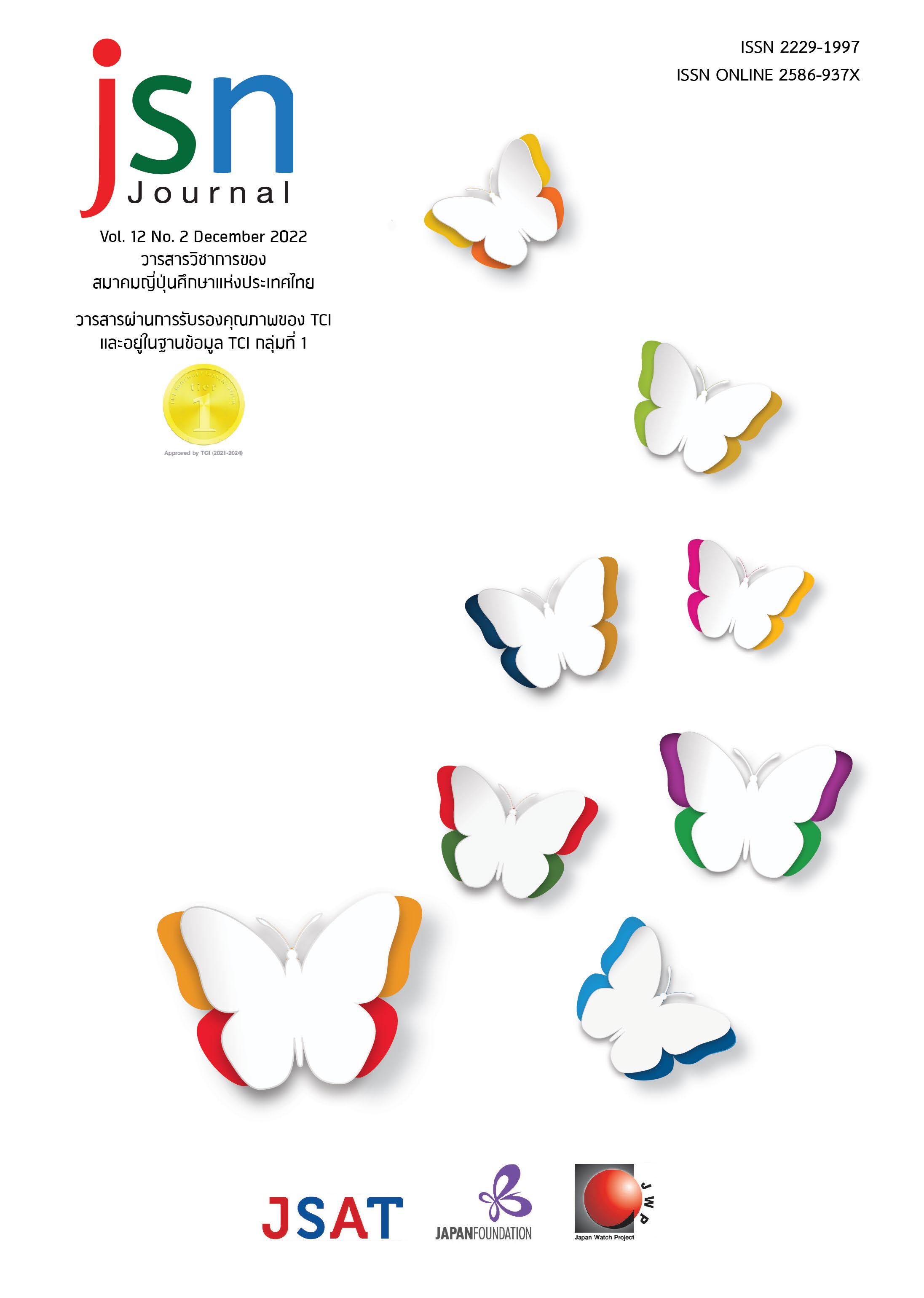Examples of Attempts at Contrastive Studies between Japanese and Chinese/Thai toward Linguistic Typology
Main Article Content
Abstract
In this paper, we argued that contrastive studies can be seen not only as studies of language expressions for foreign language education, but also as a methodology for constructing linguistic typologies. As examples, we have reviewed contrastive studies of the speech acts “apology” and “gratitude” in Chinese and Japanese that are taken as the same phase in topology. Furthermore, for the purpose of linguistic typology, we have indicated that the use of pronominal pronouns in Thai and Japanese has different orientations toward positive and negative politeness, respectively, based on politeness theory. Both of the cases suggest the possibility of a methodology for constructing a linguistic typology at pragmatic level.
Article Details

This work is licensed under a Creative Commons Attribution-NonCommercial-NoDerivatives 4.0 International License.
ข้อความและข้อคิดเห็นต่างๆ ในบทความเป็นของผู้เขียนบทความนั้นๆ ไม่ใช่ความเห็นของกองบรรณาธิการหรือของวารสาร jsn Journal
References
Brown, P. & Levinson, S. (1987{1978}). Politeness: Some Universals in Language Usage. Cambridge: Cambridge University Press.
Inoue, M. (2002). “Gengo no taisho kenkyu” no yakuyu to igi. Taisho Kenkyu to Nihongo Kyoiku, 3-20. National Institute for Japanese Language and Linguistics.
Ishiwata, T. & Takada, M. (1990). Taisho Gengogaku. Ofu Sha.
Kondo, Y.& Komori, W. (2012). Kenkyu sha Nihongo Kyoiku Jiten. Kenkyu Sha.
Ogoshi, N. (Ed.). (2002). Taisho Gengogaku. University of Tokyo Press.
Sakota, K.(2002). Nihongo Kyouiku ni Ikasu Dainigengo Shutoku Kenkyu. Aruku.
Sasaki, M. (1998). Gengo no taisho kenkyu to gengo kyoiku. Nihongo Kagaku [Japanese Linguistics] 3, 127-13. National Institute for Japanese Language and Linguistics.
Taniguchi, R. et al. (2013). “A topological analysis of expressions of apology and thanks-comparative studies of Japanese, Chinese and Arabic”. 13th International Pragmatics Conference. International Pragmatics Association, India Habitat Centre, New Delhi, India.
Taniguchi, R. (2009). Contrastive analysis of expressions of apology and thanks in Japanese and Chinese: Functions and politeness in discourse [Doctoral thesis, International Christian University].
Taniguchi, R. (2013). “Wabi to kansha no nicchu taisho kenkyu: Nihongo kyoikugaku nimukete”. 2013 Nian Zhongguo Wenhua Daxue Ribenyu Wenxuexi Kuayuxing Riyujiaoyuxue Guoji Xueshu Yantaohui_Yi Xuejixing Fuhe Lingyu Yanjiu zhi Riyujiaoyuxue wei Mubiao_, 1-10 Chinese Culture University.
Taniguchi, R. (2015). “Contrastive studies as methodology: An example with the pragmatics of apology and thanks”. jsn Journal, 5 (2), 1-11.
Wittayapanyanon, S. & Tominori, N. (2020). “Socio-cultural Appropriateness in Thai Language Education and Application to CEFR_Focusing on the expressions of personal terms and address terms from the viewpoint of Politeness Theory_”. JAFLE BULLETIN No.23. 96-114, 2020.12.
Wittayapanyanon, S. (2019). “A fact-finding survey of second-person term usage in Thai and related issues in Thai education programs”. Tokyo University of Foreign Studies, Area and Culture Studies No.99, 173-191.
Yamanashi, M. (1986). Shin Eibunpo Sensho 12 Hatsuwa Koi. Taishukan Shoten.
Yasui, M. (1981). “Taisho kenkyu no nagare”. Gekkan Gengo 10 (12), 22-29.


